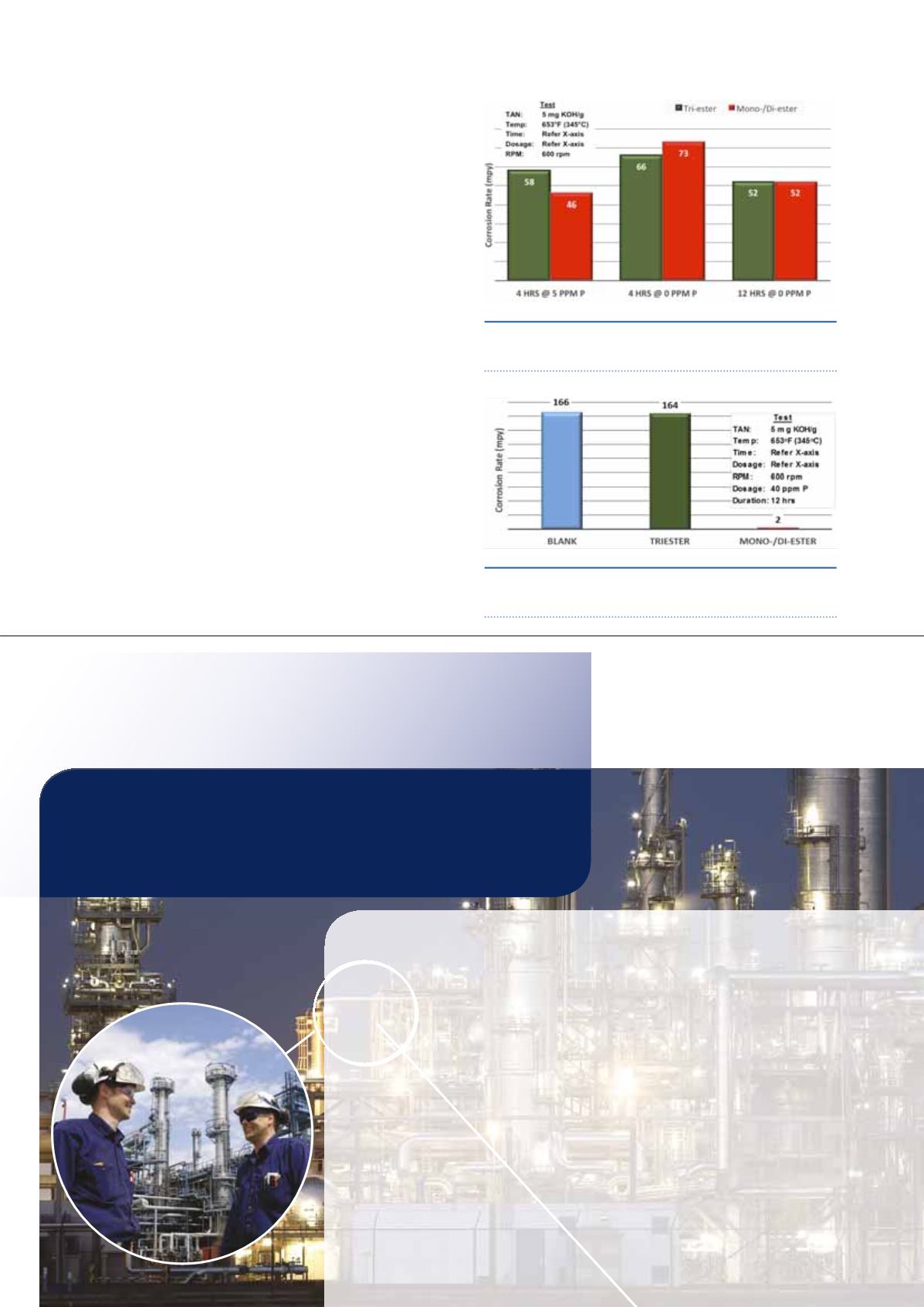
shows the amount of phosphorous laydown on the carbon
steel rod. This is analogous to the level of protection the
various phosphorous-based products would provide.
Table 1 shows the detailed differences between the rods. As
shown, the level of laydown from the mono-/di-ester is
approximately four times that of the tri-ester.
Ability to passivate and protect in a
dynamic situation
The previous experiments showed that the mono- and
di-esters are more effective in providing a protective
phosphate layer. To evaluate the effect on corrosion
inhibition, another test was performed utilising a high
temperature spinning autoclave. In this test, the
difference between the mono-/di-ester and tri-ester
ability to protect under dynamic conditions was
evaluated. This protocol included a pre-passivation
step. Corrosion coupons used were pre-passivated
using the products at a 40 ppm of phosphorous
equivalent level for two hours at 653°F (345°C). The
initial test dosage was carried out at 5 ppm
phosphorous equivalent. Corrosion rates were
calculated by weight loss of the coupons.
Based on the HLPS results, the expected result was
that the mono-/di-ester product would outperform
the tri-ester one. However, the corrosion inhibition
results of both products were very close, indicating
that at equivalent phosphorus levels, both chemistries
Figure 4.
Dynamic test conditions and results – at
equivalent phosphorous.
,QWHUWHN 3LORW 3ODQW 6HUYLFHV
<RXU LQGHSHQGHQW SLORW VFDOH
SURFHVV UHVHDUFK ODERUDWRU\
3URFHVV 7HFKQRORJLHV
•
)L[HG %HG &DWDO\WLF
3URFHVVLQJ
•
6ROYHQW 'HDVSKDOWLQJ
•
'LVWLOODWLRQ
•
'HVDOWLQJ
•
'HOD\HG &RNLQJ
•
9LVEUHDNLQJ
•
6ROYHQW ([WUDFWLRQ
$SSOLFDWLRQV ,QFOXGH
•
&DWDO\VW )HHGVWRFN
6FUHHQLQJ
•
3URFHVV 7HFKQRORJ\
(YDOXDWLRQV
•
2SWLPL]DWLRQ 6WXGLHV
•
7ROO 3URGXFWLRQ
&RQWDFW
&XUWLV 1HLO %XVLQHVV 'HYHORSPHQW 0DQDJHU
:LOOLDP 3LWW :D\ 3LWWVEXUJK 3$
7
( SSV#LQWHUWHN FRP
KWWS ZZZ LQWHUWHN FRP WHVWLQJ SLORW SODQW
Figure 5.
Dynamic test conditions and results –
without passivation.








